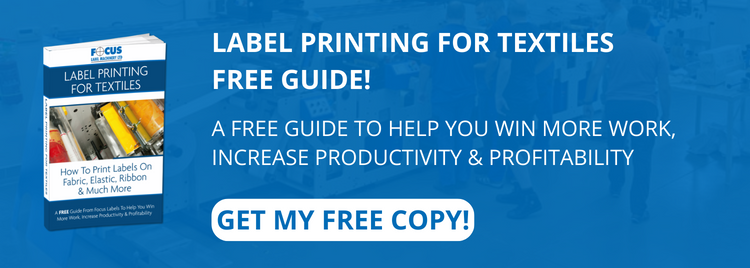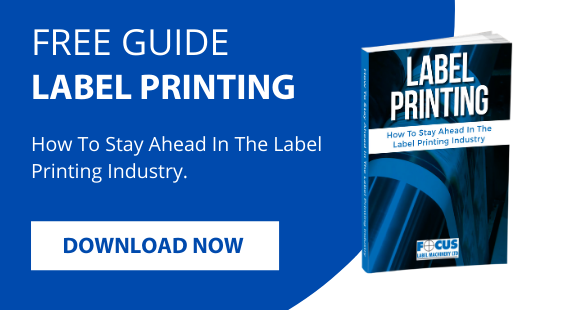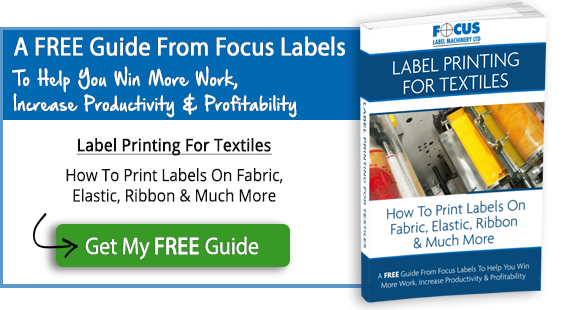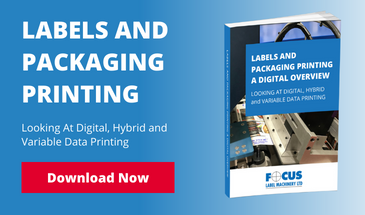
A crystal ball would certainly be a must-have item for anyone wishing to predict the printing trends of the future, as well as the costs to obtain them. This ever-changing industry is notoriously difficult to make predictions about. However, there are some occurrences which certainly do signal change in the textile, label and ribbon printing industries, and the news is very good.
Digitisation
The digitisation of the printing industry is causing much change to occur, and will continue to do so in future, especially where the management of colour & variable information is concerned. New technology developments in the area of spot colour matching, as well as better tools for colour management, will ensure printing results that are more outstanding than at any other point in history.
Technology also continues to benefit the industry beyond colour and colour management with better-than-ever tools for quality control. These management and reporting tools allow presses to be remotely accessed, which holds virtually unlimited benefits for press operators and the industry as a whole.
A large number of new press installations are digital, with many more choices being available for label converters.
In the offices of print companies, technology is positively affecting work flow to help employees manage information much more smoothly. The ordering of stock for ribbon label printing and other jobs is moving to app-based technology; which is having a significant impact on the ease and speed of ordering.
Digital label printing is poised to revolutionise the textile label printing industry. Not only will it require less in the way of operator skill, but it will also add short run capability to the process and incur minimal cost for set-up, as well as personalisation, sequential numbering and variable data. And, in going digital, there is no need for the expense and increased complexity of printing plates. The need to inventory components like printing cylinders or keep large ink stocks will also become a thing of the past.
Digital Challenges
Integration of digital technology has its challenges especially when dealing with different substrates which may require special pre-coating to make them print receptive. These coatings can increase the substrate cost significantly to the point of not being viable. In general digital Ink costs are higher and servicing & maintaining equipment need to be considered as an ongoing cost. Your printers will need to learn a whole set of new skills both in Software, Computer & Colour management , as well as mechanical & electrical skills.
Printing on textiles presents an additional challenge in that textiles are not easy to print onto directly , the finished product must be wash resistant and also safe to be in contact the skin.
Thermal Transfer Printing Technology
Thermal Transfer printers have been used in garment label printing for over a decade and are favoured by ‘In House’ garment manufacturers . They are Ideal for small runs but they are slow, suffer from print quality issues and wash resistance can be low for some applications.
Digital Offset Printing
Thanks to pioneering companies like Indigo the general print & label Industry has been revolutionised in the Digital Arena, however this technology has not been successfully used for garment Label production or Textiles in general.
Ink and Inkjet Technology
Technology in the inkjet sector is now available in several new types which, interestingly, are complementing existing technologies. We are already seeing wide web presses for textiles utilising Inkjet technology and this will be the technology most likely chosen by print press manufacturers as a way to enter the market, due to the ease of which existing inks and nozzle heads can be integrated with existing technology. Perceptions about inkjet printing continue to change and are expected to keep doing so in the future, where this technology will be seen as being perfectly suitable for the majority of label printing applications, and not just the printing of ‘regular’ labels. Focus are working on a single pass system for Printed Garment Labels, Elastics & Ribbons which will come to market in the next 12-18 months.
Low-Cost, Smarter Investment into New Equipment
As far as capital investment into new equipment goes, the cost to obtain a digital press in four colours for general printing is at its lowest point ever at an average market price of just over £8,000 up to £750,000.
As a whole, the printing market is becoming adept at making informed decisions when making equipment investments. Reliability is a major factor for consideration, especially where Digital systems are concerned. The hefty demand placed on these systems is causing potential buyers to take a closer look at the technology beneath them when evaluating their options. Potential purchasers of new equipment have to now consider running costs such as Inks, special materials, equipment service & maintenance & even the effects of the working environment on press performance & quality.
Hybrid Presses and Production
Hybrid presses are certainly generating a lot of excitement and will continue to increase in sophistication in the future. These next-generation bastions of productivity house both conventional and digital presses, between which jobs can be seamlessly switched. Moreover, the information management systems of today will also continue to revolutionise the routeing process for label print jobs.
All manner of labelling, including textile label printing and ribbon printing, are likely to be produced using hybrid methods in the future. Traditional Offset and Flexo technology will merge with digital to complete seamless printing jobs with accurate colour matching regardless of machine. Hybrid solutions will continue to offer a way for brand owners and converters to offer short-run printing that’s cost-effective for the customer, as well as allowing them to adapt to changes in customer requirements quickly.
Print Quality
The technology going into modern print presses is affecting visual print quality in many ways. Dot placement accuracy, reduced noise and a far lower number of defects are making print jobs look their best with very little frustration on the part of the operator.
Print quality standardisation, as well as consistency with colour across global markets, will continue to increase in pace as label makers of all sizes witness the obvious quality of results when colour is measured and produced in the same way around the globe.
Regulatory Changes
The future of the label market will certainly be affected by changes in regulation, such as that occurring in the food safety sector. These changing regulations increase concern for customers, making it imperative for printers to ensure they are staying on top of not only current compliance standards, but planned and potential changes to regulations as well. Doing this ensures that only the most modern and safe technology is used for the labelling of food.
For garment label applications accuracy of data is a key factor and management of this information through software allows advantages for global production & retailers. Using safe products will also challenge the Digital Industry where low migration Inks will need to be developed and will need to meet Oekatex stands for use in garment applications.
While these represent only a fraction of the many predicted changes in the label printing industry, one thing remains certain; a lot of focus will need to be placed on new technology if the goal is to improve the quality of print jobs, increase productivity and lessen lead time.
Get Informed with our Free Guide
Our “Label Printing for Textiles” guide was created to help you improve productivity and increase your profits via the winning of more work. You’ll learn about how to print labels on several kinds of media including elastics and heat transfer paper. Our guide is available for download by clicking here.







